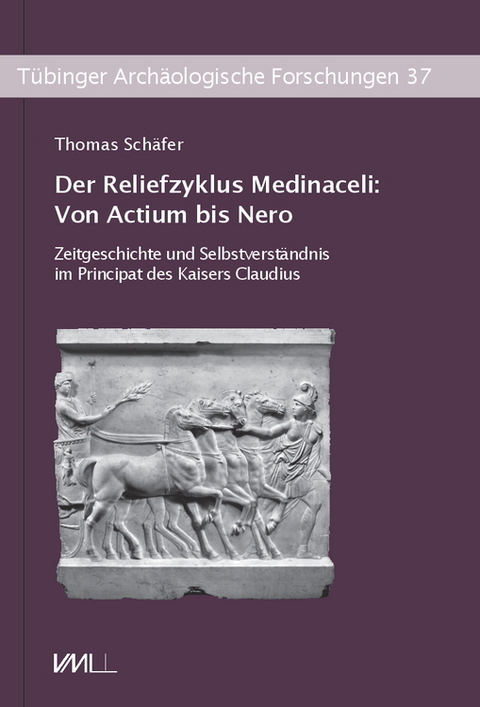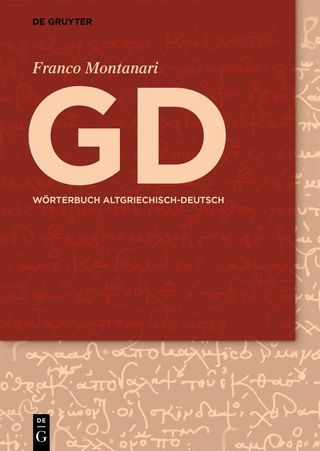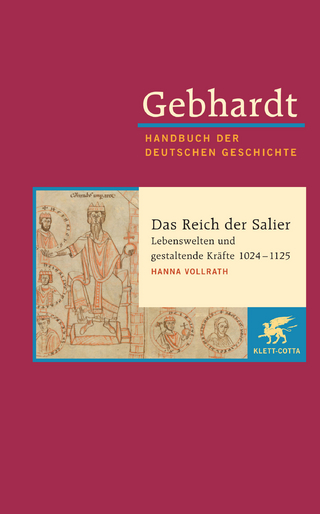Der Reliefzyklus Medinaceli: Von Actium bis Nero
Zeitgeschichte und Selbstverständnis im Principat des Kaisers Claudius
Seiten
2022
|
1., Aufl.
VML Vlg Marie Leidorf (Verlag)
978-3-89646-868-0 (ISBN)
VML Vlg Marie Leidorf (Verlag)
978-3-89646-868-0 (ISBN)
Der Zyklus der Medinacelireliefs wird hier erstmals ausführlich publiziert. Die insgesamt 12 erhaltenen Reliefs und Fragmente, die sich heute in Córdoba, Sevilla und Budapest befinden, lassen sich nach Darstellung und Bewegungsrichtung drei Friesen zuordnen, die ein unbekanntes, vermutlich dem Kaiserkult gewidmetes Gebäude in Süditalien geschmückt haben. Die stilistische und historische Einordnung erlaubt eine Datierung in claudische Zeit. Auf Fries B ist daher der Triumph des Claudius über Britannien als Höhepunkt kaiserlicher Repräsentation zu erkennen. Dagegen thematisiert Fries C die ikonographisch selten belegte pompa circensis, wie durch die Tensa des Divus Augustus gesichert wird. Ein solcher Aufzug zeigt gerade in claudischer Zeit eine starke dynastische Prägung durch die Präsentation von Statuen divinisierter und anderer wichtiger Personen, von denen nur Pompeius als beispielhafter Princeps und großer Seesieger erhalten ist. Daneben werden in Anlehnung an das berühmte Ravennarelief neben dem Divus Augustus und der Diva Iulia auch Antonius als zweiter Großvater des Claudius sowie der Divus Iulius dargestellt gewesen sein, der als erster versucht hatte, Britannien zu erobern. Der Anlass dieser in besonderer Weise gefeierten pompa circensis dürfte der bei Tacitus ausführlich gewürdigte Aufzug im Jahre 51 n.Chr. gewesen sein, bei dem Nero und Britannicus als Nachfolger des Claudius propagiert wurden. Fries A beschwört mit der zwischen den Großvätern des Claudius, Octavian und Antonius ausgefochtenen Seeschlacht von Actium, die von Vergil im 5. Buch der Aeneis poetisch reflektiert wird, den Gründungsmythos des Principats unter der Aegide Apolls.
This is the first exhaustive publication of the Medinaceli relief cycle. The 12 preserved reliefs and fragments, today housed in Córdoba, Seville and Budapest, can be grouped into three friezes on the basis of the depiction and direction of movement. These friezes adorned an unknown building in southern Italy, probably dedicated to the imperial cult. The stylistic and historical contextualisation suggests a date in Claudian times. Frieze B therefore shows the triumph of Claudius over Britain as a climax of imperial representation. In contrast, frieze C depicts the iconographically rarely attested pompa circensis, as shown by the tensa of Divus Augustus. Particularly in Claudian times, such a procession bears a strong dynastic character, given the presentation of the statues of divinized and other important persons, of which only Pompey as exemplary princeps and great naval victor is preserved. In addition, and borrowing from the famous Ravenna relief, Antonius - the second grandfather of Claudius - and Divus Iulius - who was the first to attempt a conquest of Britain - are shown alongside Divus Augustus and Diva Iulia. The occasion for this pompa circensis, celebrated in a special manner, was most likely the procession in A.D. 51, extensively described in Tacitus, during which Nero and Britannicus were promoted as Claudius' successors. Frieze A shows the naval battle of Actium fought between Claudius' grandfathers, Octavian and Antonius, which was poetically refracted in Virgil's 5th book of the Aeneis and which calls to mind the principate's origin myth under the protection of Apollo. This is the first exhaustive publication of the Medinaceli relief cycle. The 12 preserved reliefs and fragments, today housed in Córdoba, Seville and Budapest, can be grouped into three friezes on the basis of the depiction and direction of movement. These friezes adorned an unknown building in southern Italy, probably dedicated to the imperial cult. The stylistic and historical contextualisation suggests a date in Claudian times. Frieze B therefore shows the triumph of Claudius over Britain as a climax of imperial representation. In contrast, frieze C depicts the iconographically rarely attested pompa circensis, as shown by the tensa of Divus Augustus. Particularly in Claudian times, such a procession bears a strong dynastic character, given the presentation of the statues of divinized and other important persons, of which only Pompey as exemplary princeps and great naval victor is preserved. In addition, and borrowing from the famous Ravenna relief, Antonius - the second grandfather of Claudius - and Divus Iulius - who was the first to attempt a conquest of Britain - are shown alongside Divus Augustus and Diva Iulia. The occasion for this pompa circensis, celebrated in a special manner, was most likely the procession in A.D. 51, extensively described in Tacitus, during which Nero and Britannicus were promoted as Claudius' successors. Frieze A shows the naval battle of Actium fought between Claudius' grandfathers, Octavian and Antonius, which was poetically refracted in Virgil's 5th book of the Aeneis and which calls to mind the principate's origin myth under the protection of Apollo.
This is the first exhaustive publication of the Medinaceli relief cycle. The 12 preserved reliefs and fragments, today housed in Córdoba, Seville and Budapest, can be grouped into three friezes on the basis of the depiction and direction of movement. These friezes adorned an unknown building in southern Italy, probably dedicated to the imperial cult. The stylistic and historical contextualisation suggests a date in Claudian times. Frieze B therefore shows the triumph of Claudius over Britain as a climax of imperial representation. In contrast, frieze C depicts the iconographically rarely attested pompa circensis, as shown by the tensa of Divus Augustus. Particularly in Claudian times, such a procession bears a strong dynastic character, given the presentation of the statues of divinized and other important persons, of which only Pompey as exemplary princeps and great naval victor is preserved. In addition, and borrowing from the famous Ravenna relief, Antonius - the second grandfather of Claudius - and Divus Iulius - who was the first to attempt a conquest of Britain - are shown alongside Divus Augustus and Diva Iulia. The occasion for this pompa circensis, celebrated in a special manner, was most likely the procession in A.D. 51, extensively described in Tacitus, during which Nero and Britannicus were promoted as Claudius' successors. Frieze A shows the naval battle of Actium fought between Claudius' grandfathers, Octavian and Antonius, which was poetically refracted in Virgil's 5th book of the Aeneis and which calls to mind the principate's origin myth under the protection of Apollo. This is the first exhaustive publication of the Medinaceli relief cycle. The 12 preserved reliefs and fragments, today housed in Córdoba, Seville and Budapest, can be grouped into three friezes on the basis of the depiction and direction of movement. These friezes adorned an unknown building in southern Italy, probably dedicated to the imperial cult. The stylistic and historical contextualisation suggests a date in Claudian times. Frieze B therefore shows the triumph of Claudius over Britain as a climax of imperial representation. In contrast, frieze C depicts the iconographically rarely attested pompa circensis, as shown by the tensa of Divus Augustus. Particularly in Claudian times, such a procession bears a strong dynastic character, given the presentation of the statues of divinized and other important persons, of which only Pompey as exemplary princeps and great naval victor is preserved. In addition, and borrowing from the famous Ravenna relief, Antonius - the second grandfather of Claudius - and Divus Iulius - who was the first to attempt a conquest of Britain - are shown alongside Divus Augustus and Diva Iulia. The occasion for this pompa circensis, celebrated in a special manner, was most likely the procession in A.D. 51, extensively described in Tacitus, during which Nero and Britannicus were promoted as Claudius' successors. Frieze A shows the naval battle of Actium fought between Claudius' grandfathers, Octavian and Antonius, which was poetically refracted in Virgil's 5th book of the Aeneis and which calls to mind the principate's origin myth under the protection of Apollo.
| Erscheinungsdatum | 04.01.2023 |
|---|---|
| Reihe/Serie | Tübinger Archäologische Forschungen ; 37 |
| Verlagsort | Rahden |
| Sprache | deutsch |
| Maße | 210 x 297 mm |
| Gewicht | 2510 g |
| Einbandart | gebunden |
| Themenwelt | Geschichte ► Allgemeine Geschichte ► Altertum / Antike |
| Schlagworte | Frühe Kaiserzeit • Heroismus • Kaiserkult • Kult • Relief • Schlacht • Schlachtengedenken • See |
| ISBN-10 | 3-89646-868-5 / 3896468685 |
| ISBN-13 | 978-3-89646-868-0 / 9783896468680 |
| Zustand | Neuware |
| Haben Sie eine Frage zum Produkt? |
Mehr entdecken
aus dem Bereich
aus dem Bereich
die Inszenierung der Politik in der römischen Republik
Buch | Hardcover (2023)
C.H.Beck (Verlag)
48,00 €
Buch | Hardcover (2024)
Klett-Cotta (Verlag)
50,00 €




